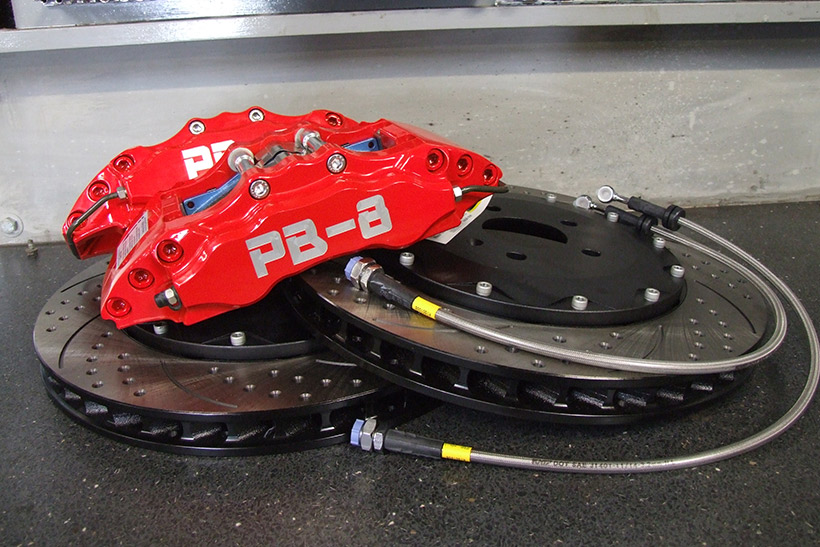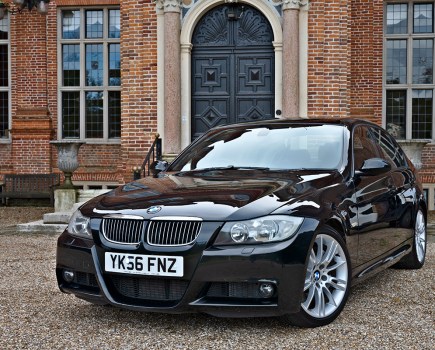Decent brakes make your car faster, fact. The more effective your stoppers the less you’ll have to use ’em and the quicker you can be back on the gas. In other words you’ll be wanting the best you can lay your mitts on.
POWER SPLIT
It may be hard to believe, but while most vehicles have a brake assembly for each wheel not all brakes are equal and the vast majority of your stopping power will befromthefront–upto80 percent of it.
It’s worth remembering that many cars still use old-skool drum brakes on the rear and upgrading those can be very expensive. Rear disc conversions aren’t exactly a job for the faint- hearted either. That’s why most aftermarket options deal with upgrading the front system. Luckily it’s the front that need it most!
There are three main parts to your braking system; the caliper assembly, the disc (or, in Americano, the rotor) and the pads. These all need to work in harmony to create the force to stop your car.
Hit the middle pedal and hydraulic fluid is forced at high pressure into the caliper, which will contain one or multiple pistons.
These pistons are then forced out against the pads which, in turn, are pushed against the surface of the disc. It’s the friction of the pad compound against the face of the disc that slows the vehicle down and eventually stops it.
CALIPERS
There are two types of caliper you’ll come across: fixed and the more common floating variety.
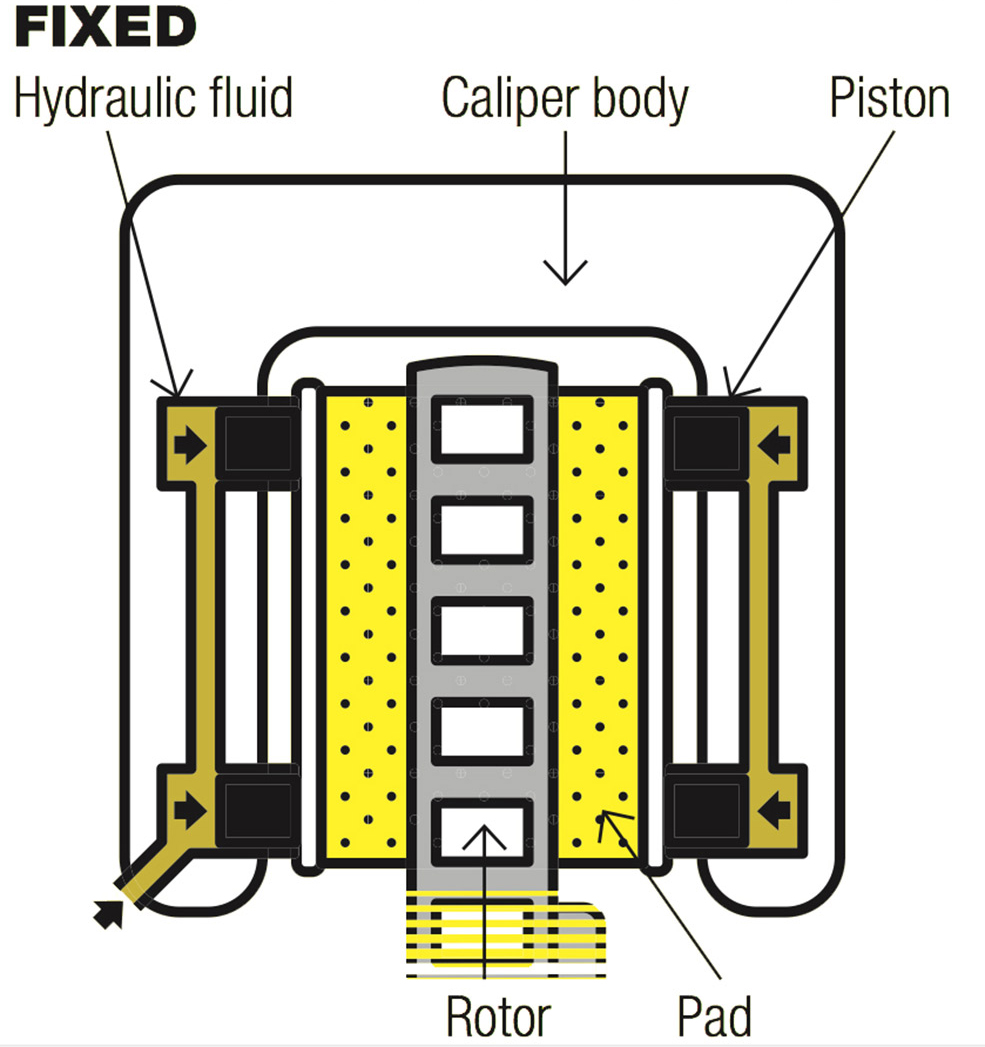
As the name suggests, fixed calipers don’t move in relation to the disc, instead they use one or more pairs of opposing pistons to clamp the pads against it. As standard these are only fitted to high performance motors and they’re also what you’ll find in many a big-disc kit. The number of pistons and their size varies from between 2-pot calipers right up to bonkers aftermarket 16-pot calipers – even a Bugatti Veyron only runs 8-pot calipers as standard!
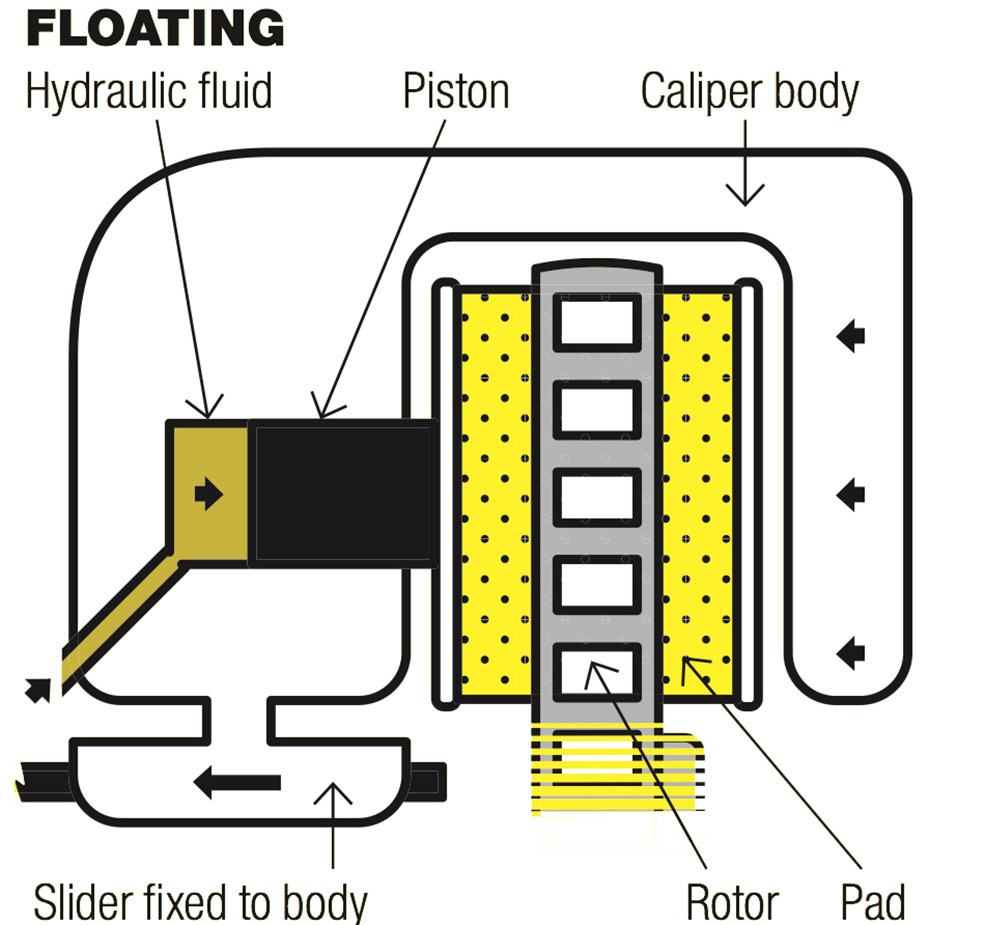
The vast majority of standard cars run a floating caliper system and this comes in two parts – the caliper body, which is designed to move, and the slider, which isn’t. These tend to have a single piston mounted to the back of the disc and when you hit the anchors the piston pushes the inner pad against the disc and then pulls the caliper body and outer pad back against the other side. Simple but effective.
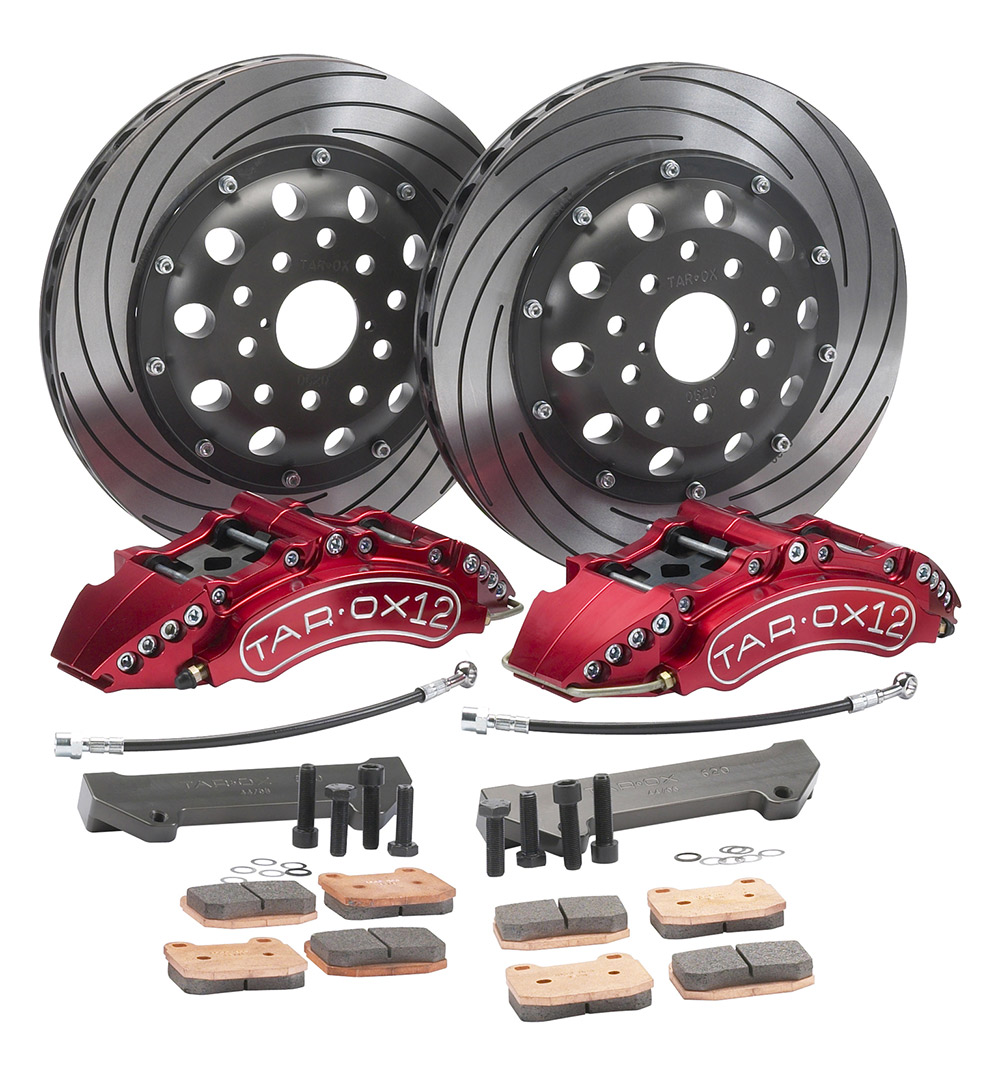
UPGRADING
The options for modding your brakes will usually fall into one of two categories – direct replacement and conversions.
Most common, and usually the least expensive, is installing direct replacement performance discs and pads. These will be uprated hardware, exactly the same size and shape as your standard items, making them simple to fit.
Conversions can be a little more complicated and range from OEM upgrades, where you’ll take bigger brakes off a higher-spec’d, compatible donor car (eg Focus brakes on a Fiesta), right through to monster brake kits with multi-pot fixed calipers, huge discs and all the trimmings.
The concept is simple – size does matter! Bigger discs and calipers not only look good, but they offer much more stopping power, too.
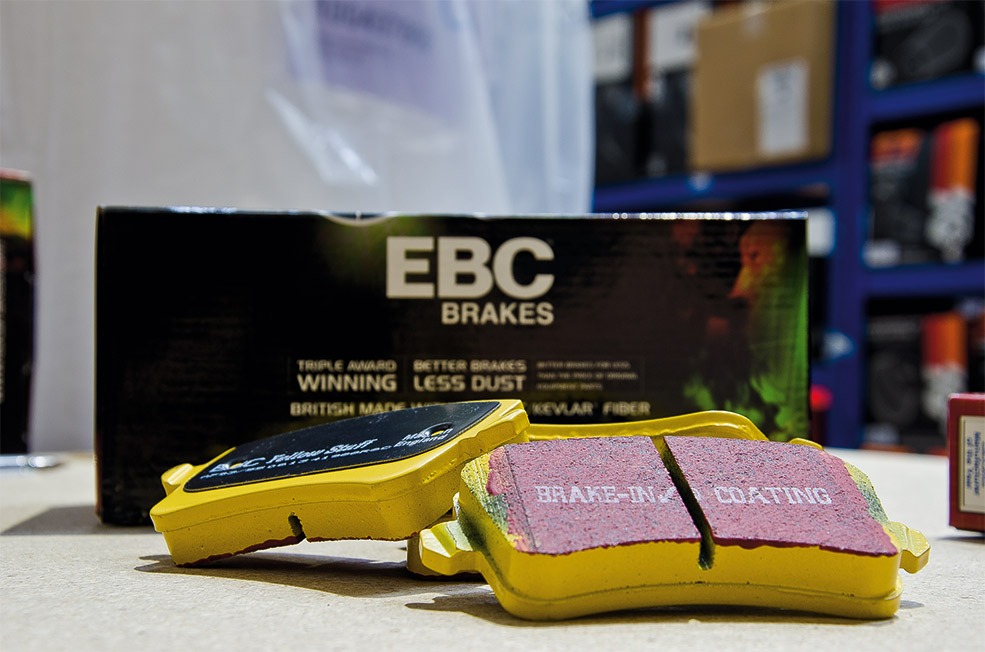
PADS
Although they come in all shapes and sizes, brake pads will always be specific to your vehicle or aftermarket calipers. What makes them different to standard is the makeup of the friction surface.
Manufacturers use different pad-compounds containing everything from semi-metallic, ceramic and organic materials. And they all give different braking characteristics and are susceptible to different operating temperatures and durability.
Softer compounds are generally suited to aggressive track driving but will wear out in a matter of laps. Harder compounds can be more durable but may run the risk of brake fade under higher temperatures. The key is finding the right balance for your application.
It’s worth remembering too that hardcore race-pads only work when they’re hot and don’t lend themselves too well to normal road driving, not if you want to stop anyway.
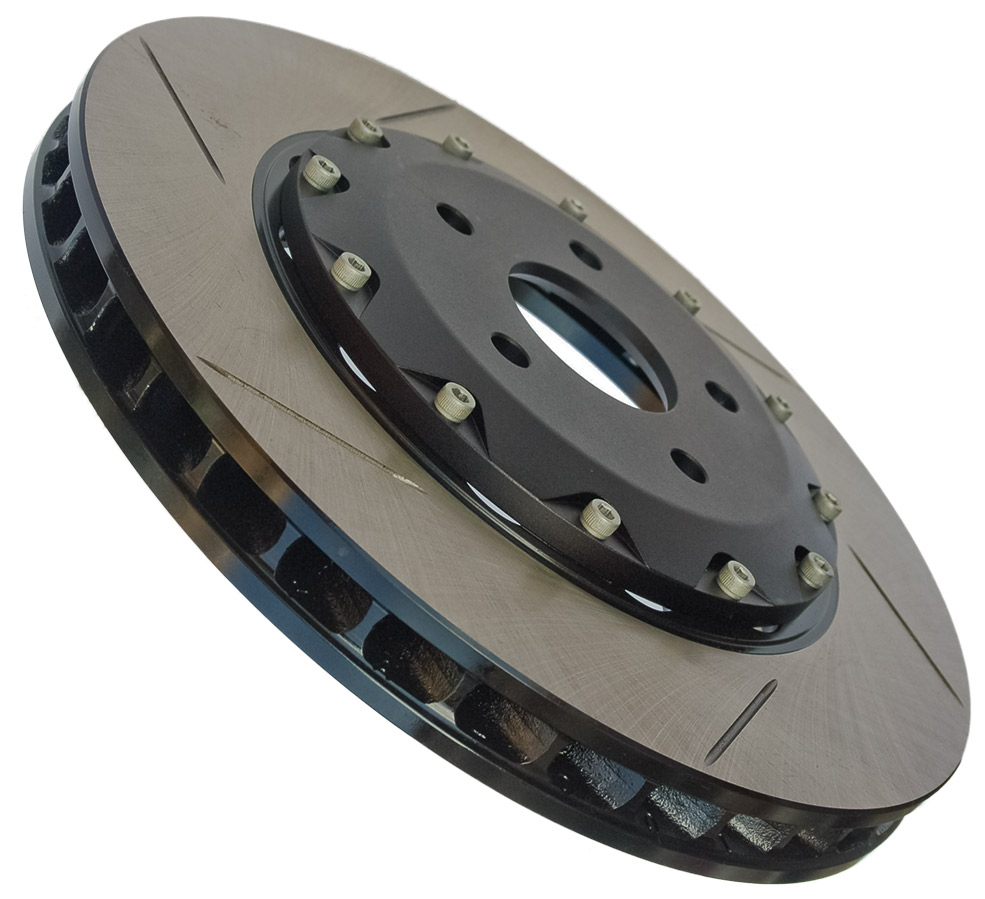
DISCS SURFACE TREATMENTS
We’ve already said that bigger discs are better but what’s also important is the braking surface. Aftermarket discs, whatever their size, are treated in a number of ways to enhance their performance.
GROOVED
These have a number of grooves machined into the face, designed to clean off the glaze that builds up with the high temperatures experienced under heavy braking. This increases the bite of the pads and also provides channels to vent gasses, produced between the disc and pad, that cause brake fade.
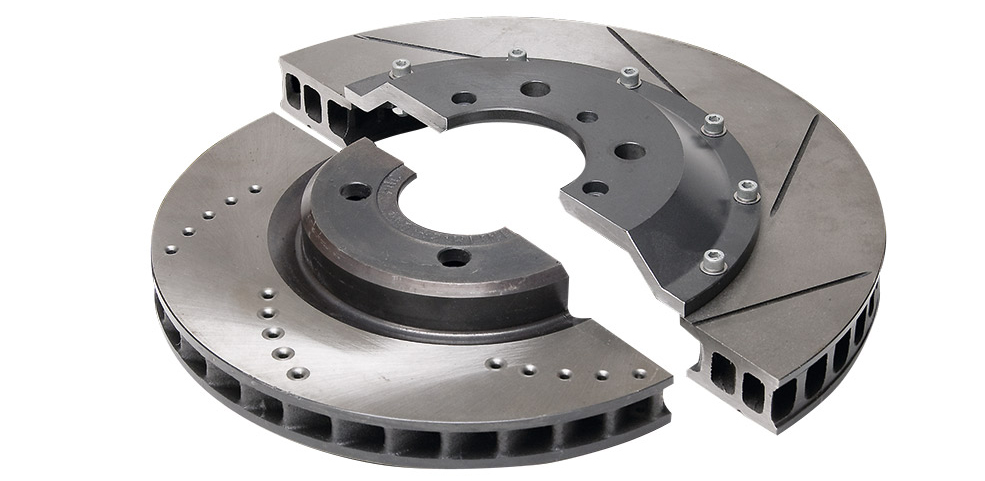
COMBI
Combi discs, often known as ‘drilled and grooved’, take the benefits from grooved, drilled and dimpled. They’re more expensive but they look awesome and work pretty well too.
DIFFERENT SHAPES
There are some disc upgrades on the market that aren’t round, too. These are machined from a circular blank into different shapes that’ll still offer a direct fit to your motor. The shapes are said to aid brake cooling and gas removal but most believe they are purely for cosmetics.
DIMPLED
Dimples are just like cross drilled discs but the holes don’t pass all the way through, to help prevent stress fracturing. They also help with gas dispersal by giving gasses a temporary place to go while it’s under the pad.
CROSS-DRILLED
These have been around since the 60s on race cars and the idea is to use drilled holes to expel gasses and dust through the disc and out of vents in the middle. Although this is great on race cars they are thought to be much more prone to cracking than discs with grooves or dimples.
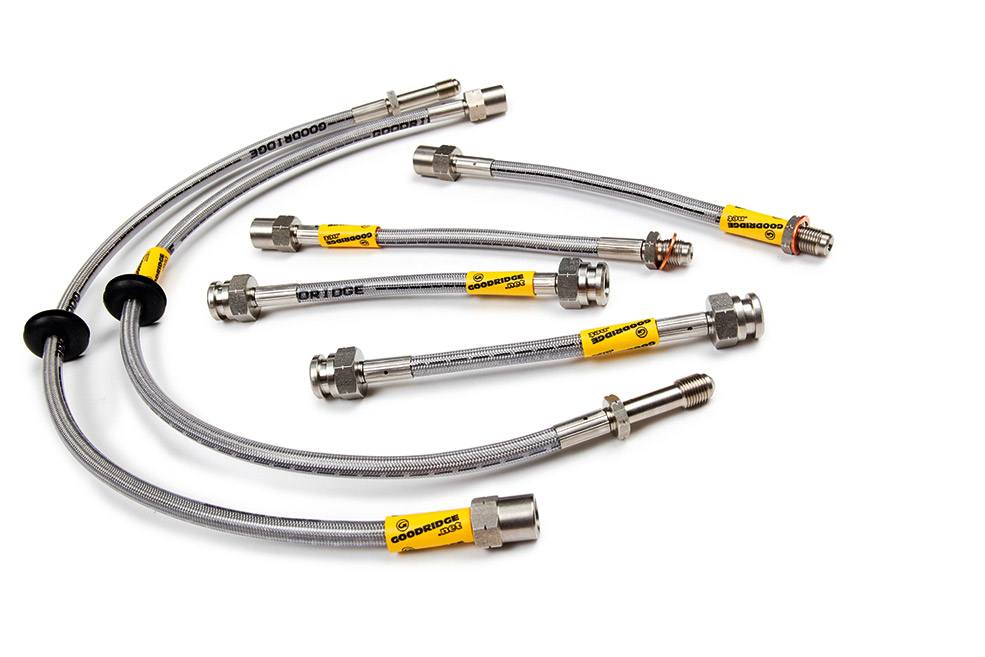
Brake lines
These carry the hydraulic fluid to the caliper and are usually made from durable rubber as standard. Unfortunately this means they can sometimes flex or bulge under the pressure of heavy braking. This problem can easily be eliminated with a set of braded steel lines. These resist higher pressures and give a less spongy feel. There are plenty of kits on the market and they start at around £30 – not a lot for a proper race-car mod!
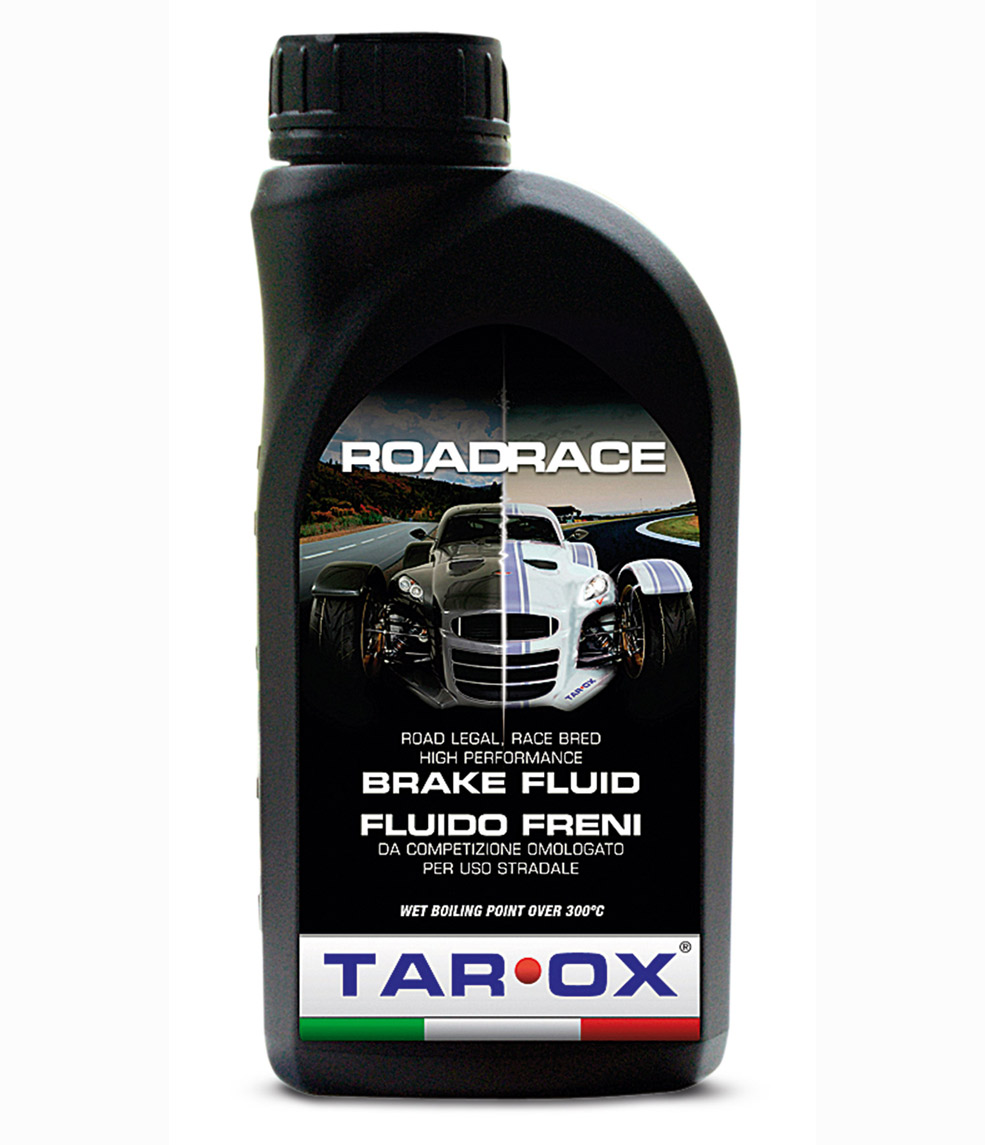
Brake Fluid
Brake fluid is often overlooked but is easily one of the most important parts of your braking system. In fact, it’s vital that you change it at least every couple of years. This is because it’s what’s known as a hygroscopic liquid, meaning over time it absorbs water from the atmosphere and this lowers its effective boiling point. For optimum performance, brake fluid needs a very high boiling point because all the heat from other components is transferred through it.
There are many performance fluids on the market and they’re rated with a DOT number (eg DOT 6). Basically the higher the number the higher the boiling point and the more resistant it is to braking heat.
See more FAST CAR GUIDES

